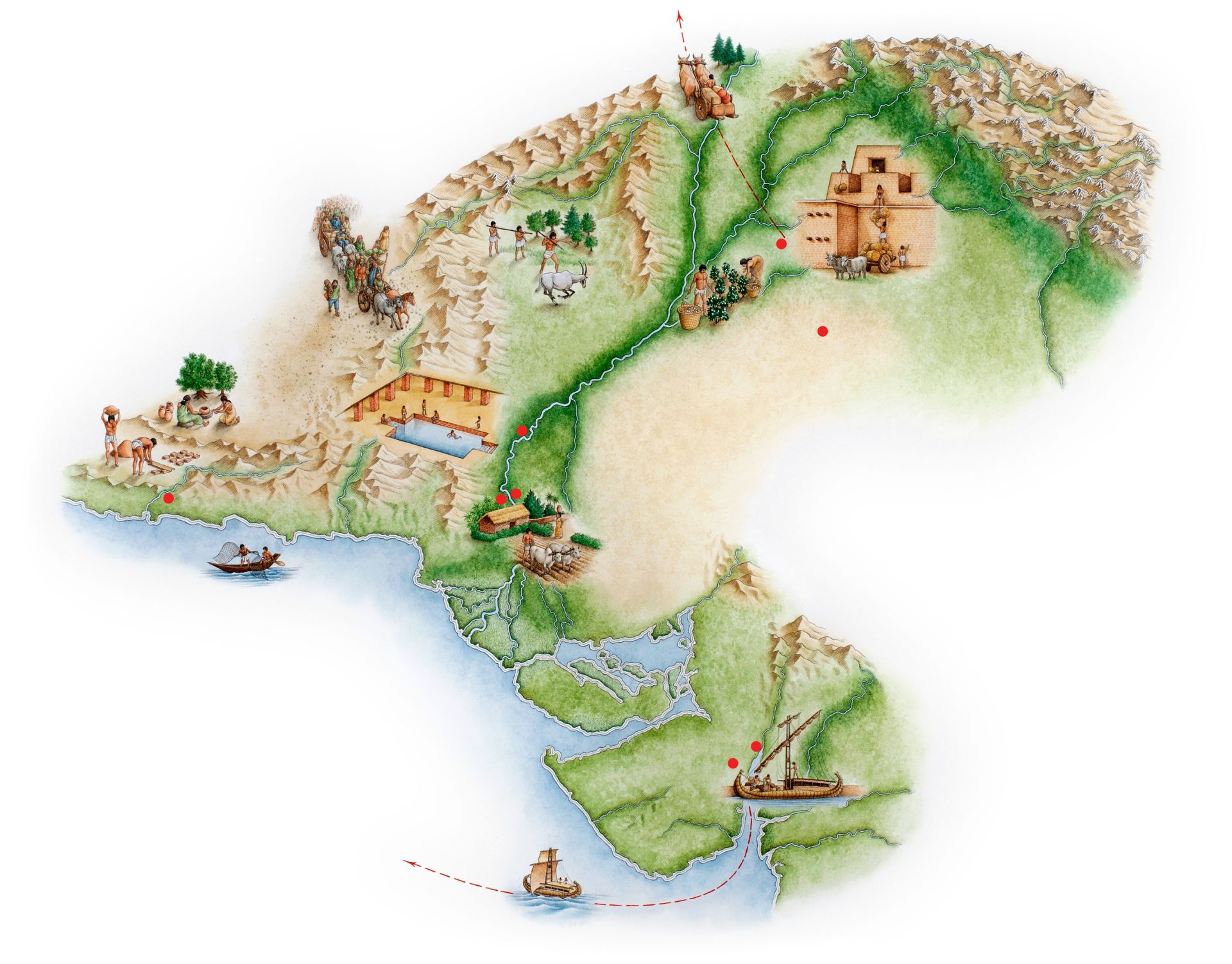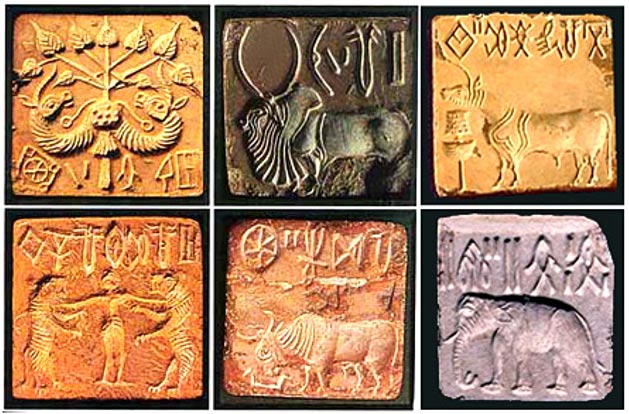Harappan Civilization, famously known as the Indus Valley Civilization is one of the integral parts of Indian history. It was known to be one of the largest and oldest of the four biggest civilizations that existed in Ancient History. Historians also call it the bronze age civilization. The civilization was spread across major regions of Afghanistan and Pakistan and also covered the Northwest part of the Indian Geography. However, this is not all that you should know about Harappan Civilization. In this blog, we have highlighted some of the interesting facts that everyone must know about the famous Harappan Civilization.
Table of contents

Location
The Harappan Civilization was spread across an area of 1,260,000 sq km, covering Pakistan, Afghanistan, and the Northwestern part of Modern India. The civilization extended from Afghanistan in the Northeastern part to Maharsahtha in the South, and Balochistan in the west to Ghaggar Hakra valley in the east. 1056 cities and settlements were found in the Harappa Civilization, of which most are located in the broad region of the Indus and Ghaggar-Hakra Rivers and their tributaries.

Did You Know? Harappan Civilization was the largest among the four civilizations that existed back then in the world. The other civilizations were Mesopotamia, Egypt, and China.
Major Cities of Harappa
On excavation, a number of cities were found in the Harappan Civilization. Some of these cities that were built were identified by archaeologists as the major cities of the Indus Valley Civilization. In short, the major cities that were born during the Harappan Civilization were:


Population
According to the investigations done by Archaeologists and famous Historians, the Harappan Civilization had a population of over 5 million, of which most of the inhabitants were artisans and traders. The population had a very organized way of living and was not chaotic like contemporary cities. Mohenjodaro had an area of 300 hectares with a population of 40000. Allahdino was known to be the smallest site of the Indus Valley Civilization.
Did You Know? Harappan Civilization was known as Indus Valley Civilization because the first settlement was discovered along the banks of the river Indus.
Religion at the Time of Harappan Civilization
The inhabitants of the Harappan Civilization worshipped Yoni and Nature. They massively believed in worshipping trees and plants like peepal, tulsi, etc. They also worshipped the fire which was known as the Havan Kund. The civilization and population even believed in worshipping animals like the ox, unicorns, cows, and more. The lord of animals was Pashupati Mahadevi. Having said that, there were no temples that were built during the Harappan civilization. This led historians to believe that the Harappan Civilization society was an egalitarian one.

Check out our top searches: Archaeology Courses [The Ultimate Guide 2021]
Economy
The Harappans’ economic situation was pretty excellent. Agriculture, animal husbandry, industry, trade, and commerce contributed to their wealth. These made them affluent and provided them with opportunities for a nice and comfortable living. They, too, were able to develop relationships with people both inside and outside of India through trade and commerce. The Harappans relied on agriculture as their major source of income. The region’s archaeological remains indicate a range of agricultural tools utilized by them. Kalibangan informs us about their agriculture. They also knew how to handle a sickle and utilized it to chop crops. The circular land was utilized for harvesting, as revealed by the Harappan granary. In their fields, they cultivated wheat, rice, maize, cotton, and different vegetables. The extra produce was kept in the granary. Agriculture was reliant on rainwater. In times of necessity, they irrigated their fields with Indus water. Also, The Harappans had a one-of-a-kind manufacturing know-how. They were quite busy making a lot of things, and each of their creations displayed their incredible creativity. Metal pots, weaving, metallic crafts, and other objects demonstrate their exceptional artistry. In fact, the earliest traces of cotton were found in the Harappan civilization and the civilization was known to be the first cultivators of cotton.

Did You Know? While 100 sites were found in the Indus Valley, over 500 sites were found along the Ghaggar-Hakra River.
Mode of Communication
The inhabitants of the Harappan Civilization conversed in language that was created and prevalent at that point in time. However, this language was not a mixture of Sanskrit and Hindi, as showcased in Ashutosh Gowariker’s 2015 film, Mohenjo Daro. 600 distinct Indus symbols were found on seals and ceramic pots. One such symbol included a signboard discovered at the inner citadel of the city of Dholavira.
Unique Features of Harappan Civilization
- The most practised profession of Harappan Civilization was Dentistry. The first evidence of drilling of human teeth was found at the excavation in Mehrgarh, Pakistan as reported by the British scientific journal Nature in 2006. Eleven drilled molars were found in a graveyard that dated back to 5,500 BC.
- The Harappan Civilization practised a unique form of Harappan Civilization. The excavation site at Dholavira suggested that river water was stored in gigantic reservoirs and nearly sixteen reservoirs were discovered at Dholavira.
- City Planning occurred in a standardized manner. Historians argue that this must have been done to aid the reconstruction of the cities that were ruined by floods. The standardized design was also indicative of the fact that people followed an accepted form of governance.
Did You Know? Harappan Civilization is also known as ‘Indus-Saraswati Civilization’ by archaeologists based on the two river systems.
So, these were some amazing and interesting facts that everyone must know about the Harappan Civilization. Harappan Civilization is definitely one of the most striking features of ancient Indian history and is studied to date all over the world. We hope you found this to be insightful. For more informative and insightful content, stay connected with Leverage Edu!

 One app for all your study abroad needs
One app for all your study abroad needs






















 45,000+ students realised their study abroad dream with us. Take the first step today.
45,000+ students realised their study abroad dream with us. Take the first step today.

